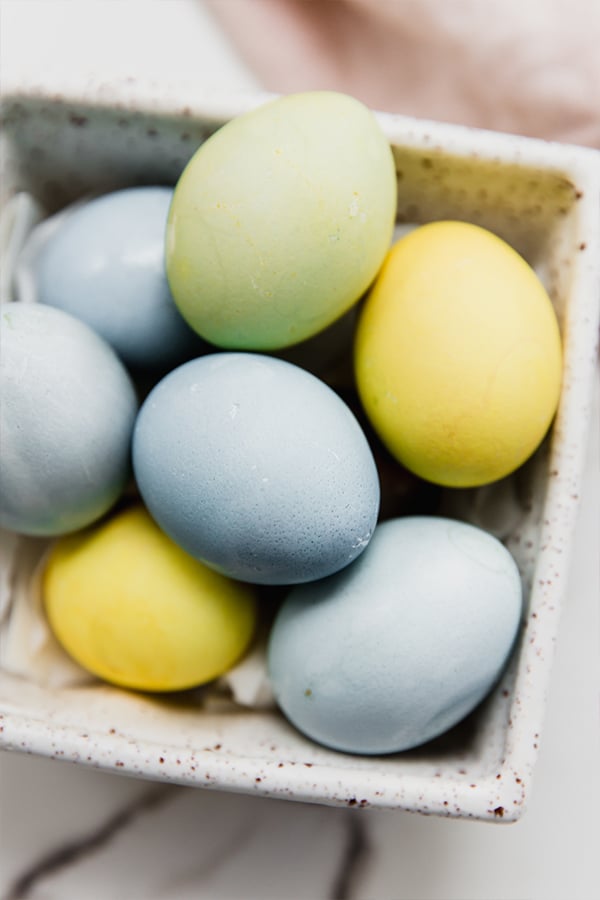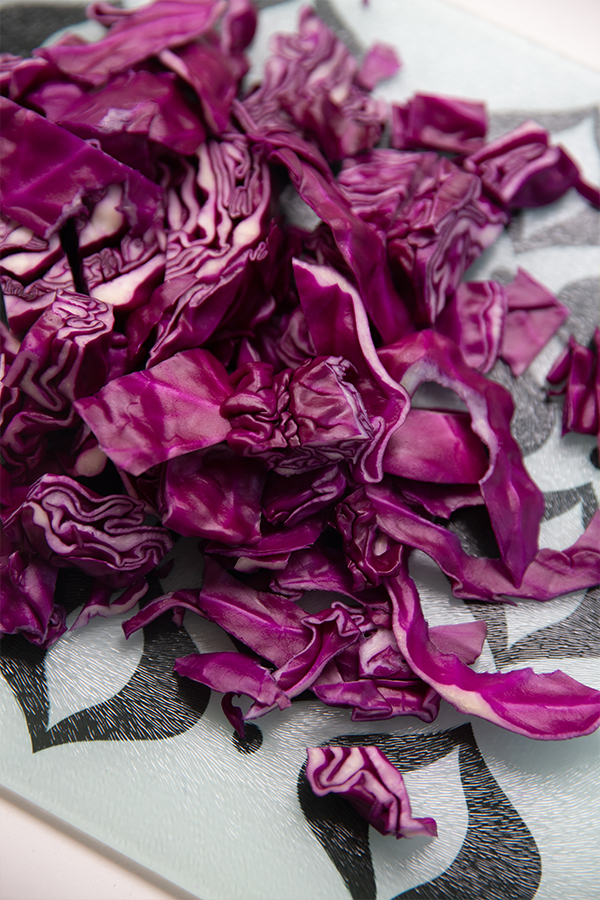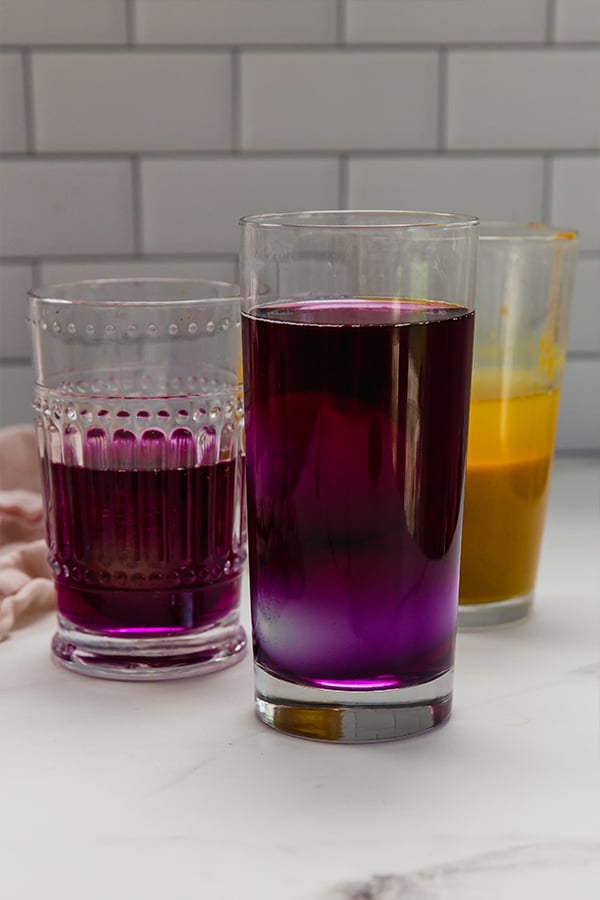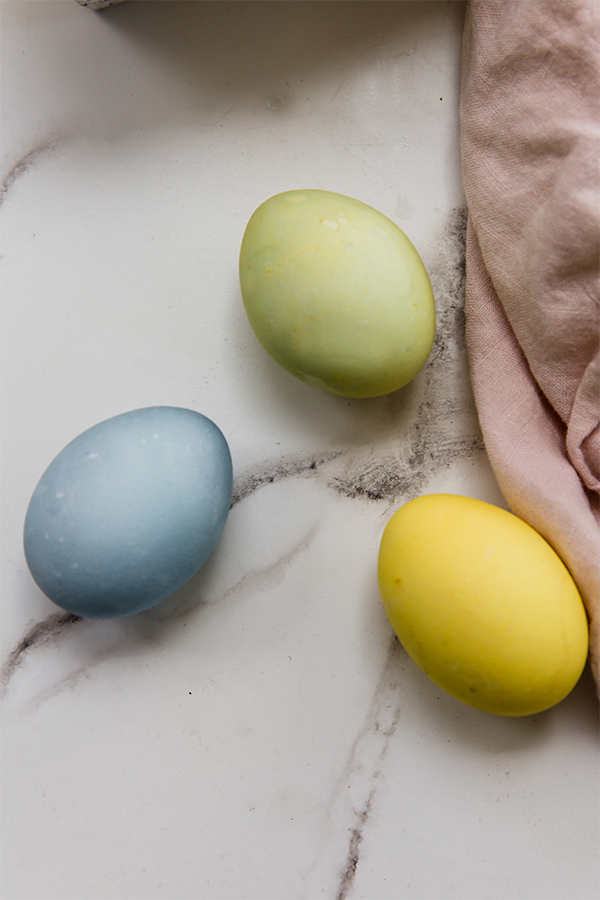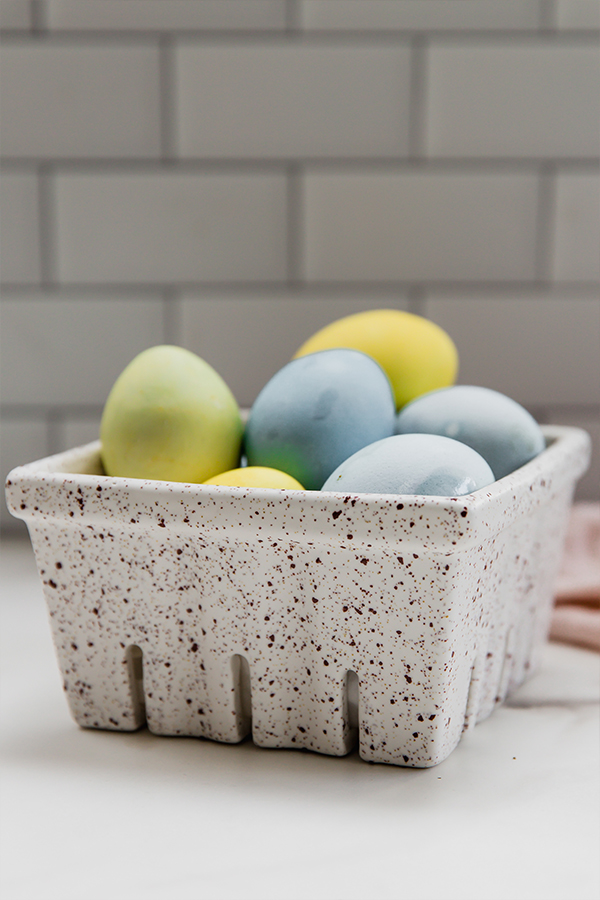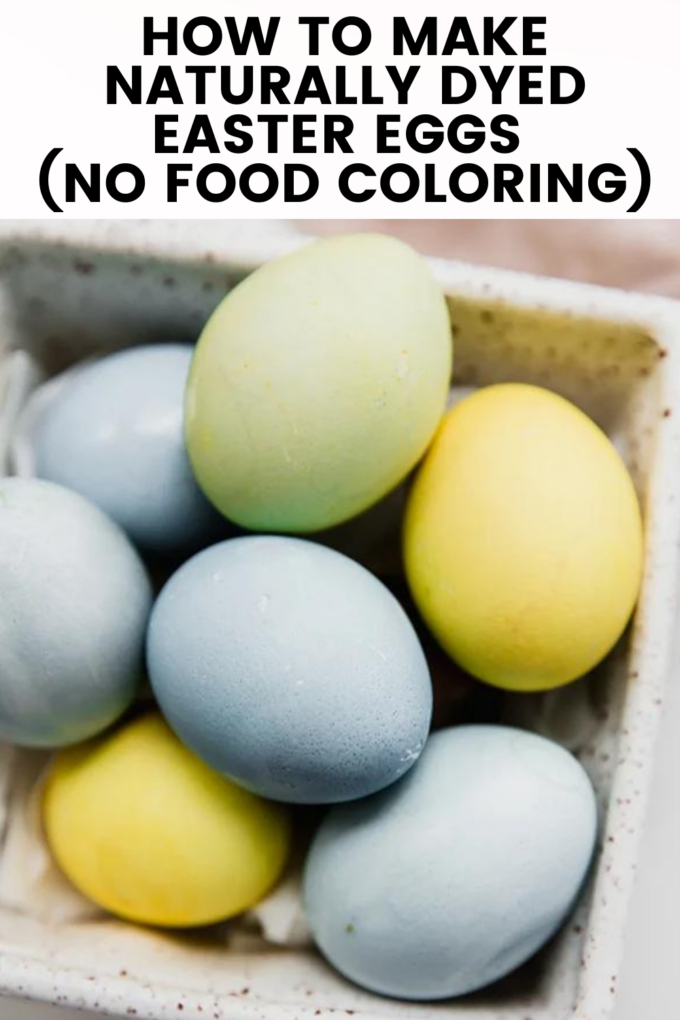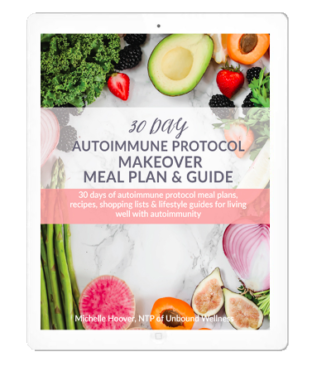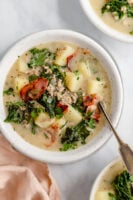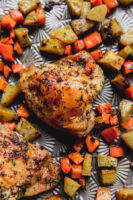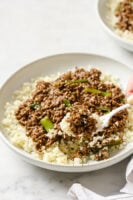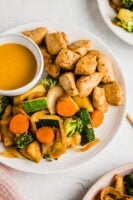How to make Naturally Dyed Easter Eggs (no food coloring)
This is the easiest way to make naturally dyed easter eggs! All you need is cabbage, turmeric, water, vinegar, and eggs for the perfectly dyed eggs.
Why not use food coloring to dye Easter eggs?
I grew up using food coloring for Easter eggs like many of us did, so why switch to food instead?
- Many kids are sensitive to food coloring so a natural alternative is safer.
- It’s incredibly simple to make your own dye with food that you probably already have on hand to save money!
What do you need to make naturally dyed Easter eggs?
You can make this process a lot more in-depth and use more fruit and vegetables like blueberries to make blue eggs, spinach to make green eggs, and onion skins to make tan eggs. However, if you want to keep it simple and still get a large range of colors, all you’ll need is…
- Red Cabbage
- Ground turmeric
- Water
- Vinegar
With the cabbage and turmeric, you’ll be able to make blue eggs, yellow eggs, and green!
How to Make Naturally Dyed Easter Eggs
- To make the blue dye, chop half of the red cabbage and add to a small saucepan and cover with 3 cups of water bring a low simmer for 25- 30 minutes. Strain and allow to come to room temperature. Add 3 tbsp of vinegar to the dye and mix.
- In a separate saucepan, add 1 tbsp of ground turmeric and cover with 2 cups of water. Bring a low simmer for 25-30 minutes. Strain and allow to come to room temperature. Add 2 tbsp of vinegar to the dye and mix.
- Add enough of the dye liquid to submerge an egg to separate drinking glasses or ramekin dishes. Submerge the eggs for at least 2 hours, or overnight for a different depth of color.
How to make Naturally Dyed Blue Easter Eggs
- Make the blue dye with red cabbage as listed above.
- Submerge a white hardboiled egg in the blue dye for at least 2 hours for a light blue egg. Leave the egg in the dye overnight for a dark blue egg.
How to make Naturally Dyed Yellow Easter Eggs
- Make the yellow dye with turmeric as listed above.
- Submerge a white hardboiled egg in the yellow dye for at least 2 hours to make a vibrant yellow egg. Use a brown hardboiled egg for a darker yellow egg.
How to make Naturally Dyed Green Easter Eggs
- Submerge a white hardboiled egg in the blue dye for 2 hours.
- Strain and transfer to the yellow dye for at least 30 minutes to make a light green egg.
Should you use white or brown eggs for naturally colored Easter eggs?
I highly recommend sticking with a majority of white eggs, because that will give you a blank canvas to add color to. You can also hard boil some brown eggs for darker colors.
Can you add decorations with tape or flowers?
You can! The easiest way to do this is to run a thin layer of tape around the eggs before you dye them to create a pattern. I’ve also seen people use twine, and even tape flowers to make really beautiful eggs.
Can you color the eggs?
I haven’t tried wax crayons on the eggs, however, my toddler did color them with a non-toxic marker and it worked great! I just wouldn’t eat those eggs.
Can you still eat the eggs?
As long as they stay properly refrigerated, you can!
Print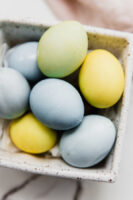
How to make Naturally Dyed Easter Eggs (no food coloring)
- Yield: 7-8 Easter Eggs 1x
Ingredients
For the red dye
- 1/2 red cabbage, chopped
- 3 cups water
- 3 tbsp white vinegar
For the yellow dye
- 1 tbsp ground turmeric
- 2 cups water
- 2 tbsp white vinegar
The eggs
- 7–8 hardboiled eggs
Instructions
For the Blue Easter Eggs
- To make the blue dye, chop half of the red cabbage and add to a small saucepan and cover with 3 cups of water bring a low simmer for 25- 30 minutes. Strain and allow to come to room temperature. Add 2 tbsp of vinegar to the dye and mix.
- Add enough of the dye liquid to submerge an egg to separate drinking glasses or ramekin dishes.
- Submerge a white hardboiled egg in the blue dye for at least 2 hours for a light blue egg. Leave the egg in the dye overnight for a dark blue egg.
For the Yellow Easter Eggs
- In a separate saucepan, add 1 tbsp of ground turmeric and cover with 2 cups of water. Bring a low simmer for 25-30 minutes. Strain and allow to come to room temperature. Add 1 tbsp of vinegar to the dye and mix.
- Add enough of the dye liquid to submerge an egg to separate drinking glasses or ramekin dishes.
- Submerge a white hardboiled egg in the yellow dye for at least 2 hours to make a vibrant yellow egg. Use a brown hardboiled egg for a darker yellow egg.
For the Green Easter Eggs
- Submerge a white hardboiled egg in the blue dye for 2 hours.
- Strain and transfer to the yellow dye for at least 30 minutes to make a light green egg.
Use the eggs as decor or you can easily still eat the eggs as hardboiled eggs as long as they stay refrigerated!
Notes
- I highly recommend sticking with a majority of white eggs, because that will give you a blank canvas to add color to. You can also hard boil some brown eggs for darker colors.
- Add more decor to the eggs by adding tape before dying them.
